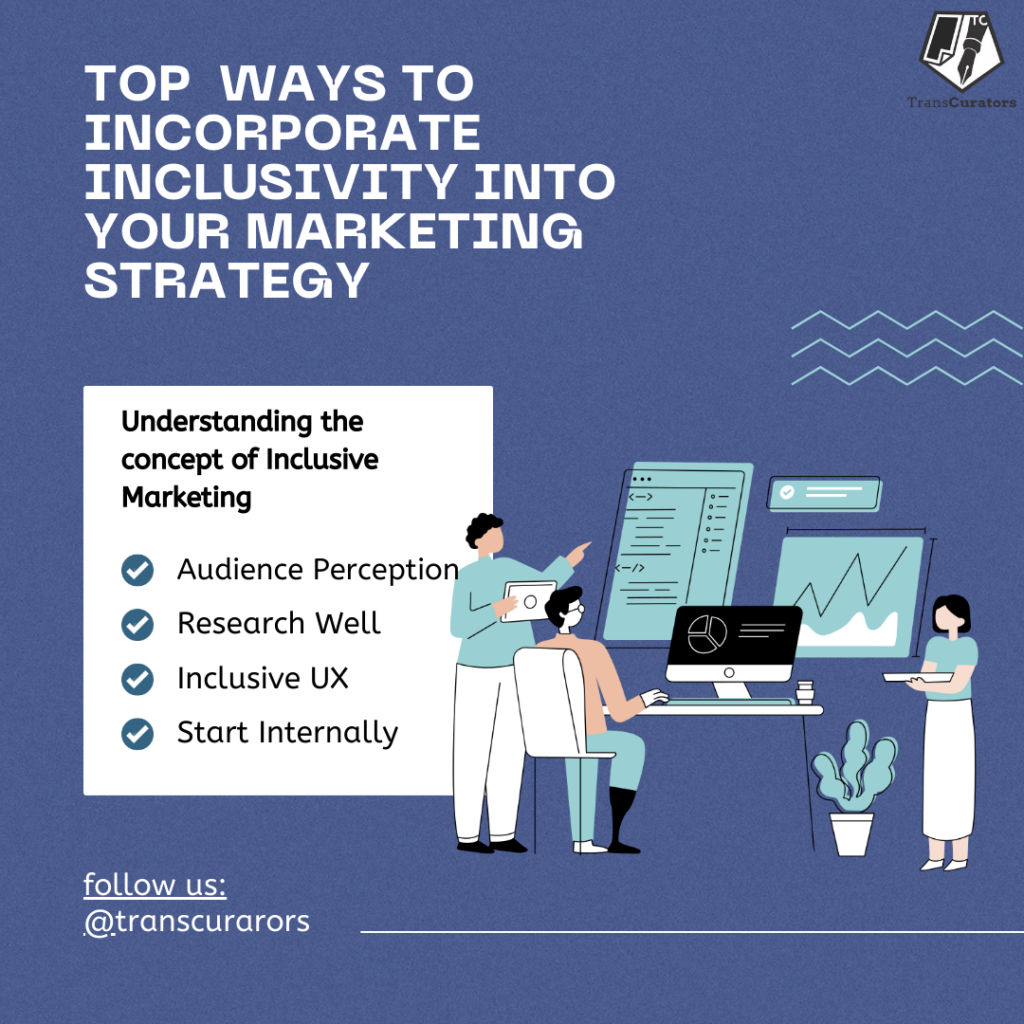The main aim or objective of any marketing strategy is to create a positive and constructive brand image. Furthermore, with the constantly evolving and diverse customer groups, marketing firms have to think ahead of the curve to cater to the changing needs. Now more than ever, it has become imperative for companies to communicate in a way that truly reflects a variety of backgrounds and experiences if they want to connect with future clients successfully.
This is where the idea of Inclusive marketing comes to the rescue. In order to inculcate inclusivity into your marketing strategies, you need to be thorough with the concept of Inclusive Marketing. Keep on reading to learn more!
Understanding the concept of Inclusive Marketing
It has been estimated that 38% of consumers trust and prefer brands that include diversity and inclusivity in their advertisements. Inclusive marketing pertains to those marketing campaigns that cater to a diverse population. It means understanding the fact that your audience is a cluster of different groups of people.
There are several factors to consider, including age, appearance, ethnicity, and gender identity. Aside from these factors, it is important to consider language, socioeconomic status, religious belief, and physical or mental abilities.
Inculcating inclusivity into your marketing strategy gives a sense that you are welcoming everyone to use and learn about your product and services. Furthermore, it has been calculated that 40% of the GenZ population find that diversity and inclusivity are the greatest brand value.
By highlighting common pain points and experiences (among other things), inclusive marketing reaches a broader audience of potential consumers and reaches them more effectively.
Brands using inclusive marketing can cast a wider net, including demographics they may have never considered before, and will challenge rigid notions about who their buyers are.
What are the benefits of Inclusive Marketing?
Following is a list of benefits that are a result of incorporating inclusivity into your marketing strategies:
- Helps the customers gain a sense of belongingness and trust
- Inclusive marketing also helps you reach a wider and diverse audience
- Helps you enhance the connection between the brand and the customers
- It further helps you represent those who are underrepresented
- It has been estimated that the brands that incorporate inclusivity into their marketing strategies are 35% more likely to surpass their competitors.
How to incorporate inclusivity into a marketing strategy?
After understanding the concept of Inclusive marketing, it is imperative that you learn how you can include it in your marketing strategies:
1.Audience Perception
Creating a foothold for minority groups requires confronting your own traditional messaging in order to incorporate inclusivity into your brand. The best way to reach your target audience is to create organic messaging and imagery that is welcoming, target-specific, and attractive instead of adapting existing brand messaging and imagery. When it comes to diversity, it is not just about listening but also about generating awareness through customer feedback in order to create a brand message that resonates with customers.
2.Using diverse visuals
The imagery and language on your marketing materials-including, your social media channels, your website, e-newsletter, and printed materials-should, reflect diverse backgrounds. Select images that represent a wide variety of people, such as people of different races, sizes, and abilities. Don’t let one person stand out above or below the others in your images. Give them all the same prominence.
3.Research well
Before finalizing your marketing strategy, it is advised to research well, get to know your audience and their preferences. In your quest to research about inclusivity, make sure that you gather opinions. Focus groups can be conducted to get feedback on the marketing plan or to compare it with other inclusive and diverse marketing plans. It is important to understand how inclusive a marketing plan is based on the public’s opinion, since these groups often include individuals you are trying to reach.
4.Inclusive UX
One of the most crucial aspects of inclusivity also includes a user friendly website and an inclusive UX. On forms, ask prospects what gender pronouns they would prefer, and make sure that you provide support/content in multiple languages.
5.Start internally
In order to create a strong inclusive marketing strategy, it is imperative that you start by diversifying your team. Ultimately, hiring more diverse marketers will help you understand and speak from a wider range of perspectives, which will ultimately lead to a stronger inclusive marketing strategy. You will have more perspectives and ideas at your disposal if your team represents a variety of backgrounds and experiences. Using this information, you will be able to craft stories, messages, and campaigns that take this into consideration.
The Last Word
The ultimate goal of inclusive marketing is to open up a brand’s community and offerings to everyone, regardless of their identities. Nonetheless, it invites underrepresented and disenfranchised groups – LGBTQIA+, people of color, the disabled, etc. – into the discussion. We are able to reach more potential customers through a welcoming, warm environment, and in addition, we are able to make the world a better place.
Inclusion can be a wow factor for any blog post, article, or advertisement. By adopting an inclusive approach to marketing, your business is demonstrating its respect for the diverse world we live in. By doing this, you can make your online courses, products, and brand more human. By integrating accessibility into your digital content, you create an environment that is welcoming to everyone. The humanization of brands can be a powerful tool for gaining an edge in today’s competitive entrepreneurial marketplace. Inclusive marketing is a critical part of this.
Inclusive marketing helps to create a more accurate representation of society in advertising and media, which can help to break down stereotypes and promote understanding and acceptance of people from different backgrounds.
